Want to learn ways to fix low volume on Windows 11?
The true experience of watching a movie or playing a video game on your Windows 11 PC greatly relies on the volume level. If the audio is too low, it’s easier to stop the activity than struggle to make out the words or sounds.
For most users, the low volume on Windows 11 issue is related to a fault in the software instead of the speakers themselves. This is usually caused by outdated audio drivers, partially incompatible generic drivers, interfering audio enhancements, BitRate sound format, app conflict, corrupted system files, and more.
Before you directly download a third-party application to boost your volume, read through this guide. We’ve covered below all the effective remedies that will help you improve low volume on Windows 11.
So let’s get started right away!
1. Check the Volume Mixer.
Before jumping straight to the fixes, let’s first make sure the problem actually exists. The sound output on your computer depends on the volume mixer. If you’ve deliberately or accidentally turned the volume low, this could be why your audio output isn’t clear enough.
Thus, check the volume mixer and turn it up if found low. Do so by following the steps below:
- Start by going to the taskbar and right-clicking on the Speaker icon.
- Next, click on Open volume mixer.
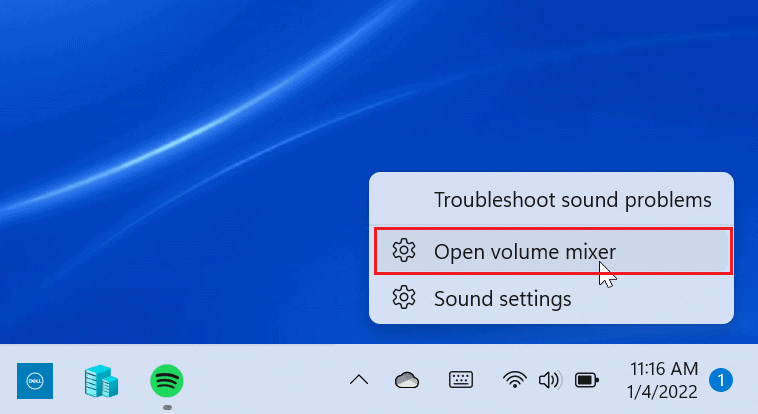
- This will open up the Volume fixer settings in Windows Settings. Check the slider next to Volume under the System section.
- You may also check and change the volume levels of different apps under the Apps section.
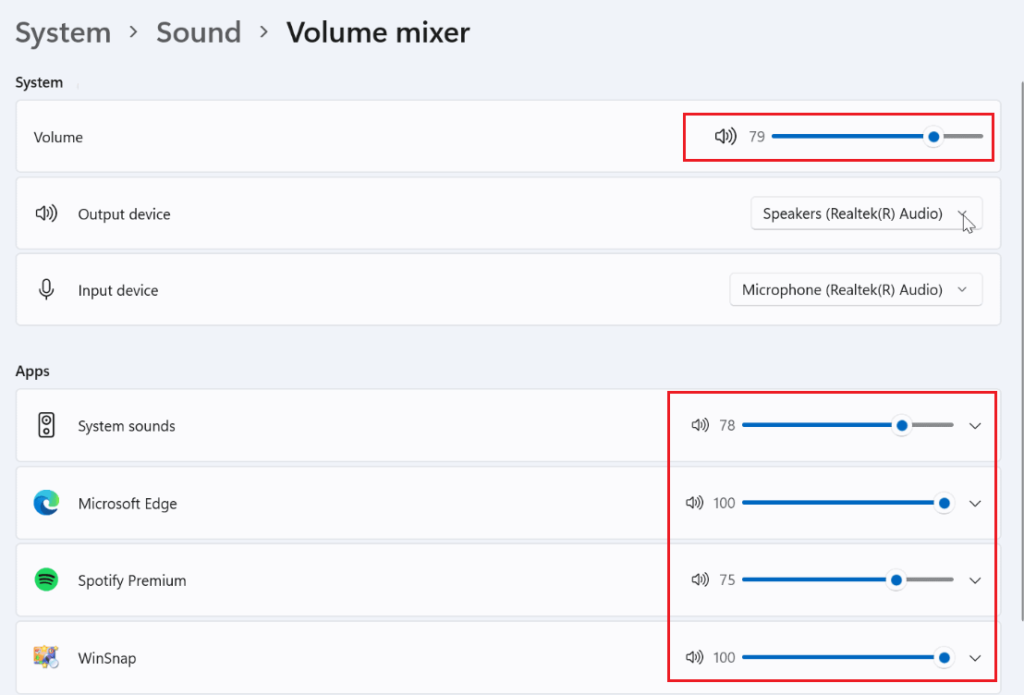
- Simply drag the volume slider to the right to increase the volume level.
2. Check the Audio Source.
As you can have more than one audio source connected to your computer, you must select the right one from the new Windows 11 Action Center. After that, your system will direct the audio to the selected source. When you’re hearing a low volume, ensure you have selected the appropriate output device.
Here’s how to do it:
- Open the Action Center in Windows 11 by pressing Win + A keys on your keyboard.
- After that, click on the arrow next to the volume slider.
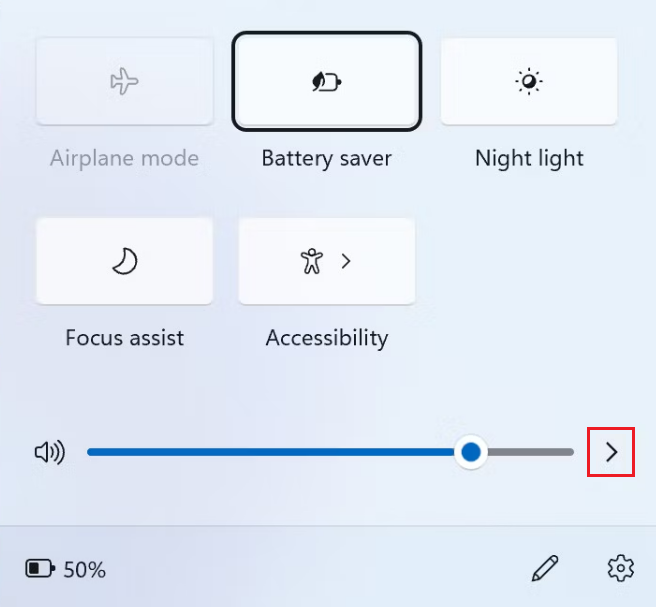
- Now, select the audio source that you wish to use.
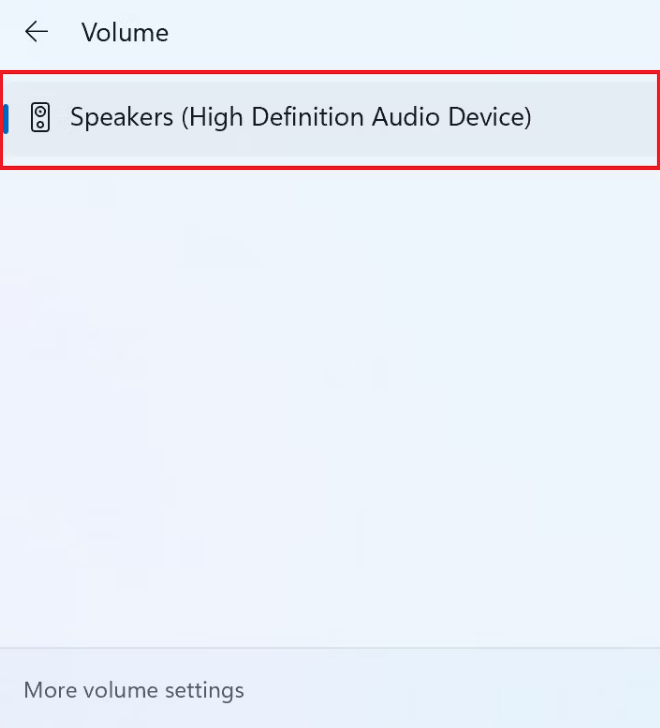
After you’re done, check if changing the audio source fixed your issue. Otherwise, head to the following method.
3. Set Your Audio Source as Default Device.
Many people ended up facing low or no volume error on their computer because they set the external monitor without built-in speakers as the default audio device. So if you connect speakers through USB, HDMI, or Bluetooth, be sure to set them as the default audio source.
To do so, follow these simple steps:
- Go to the Start menu and type in ‘cmd’ in the Search bar.
- Select Control Panel from the search results.
- From the Control Panel window, click on Hardware and Sound.
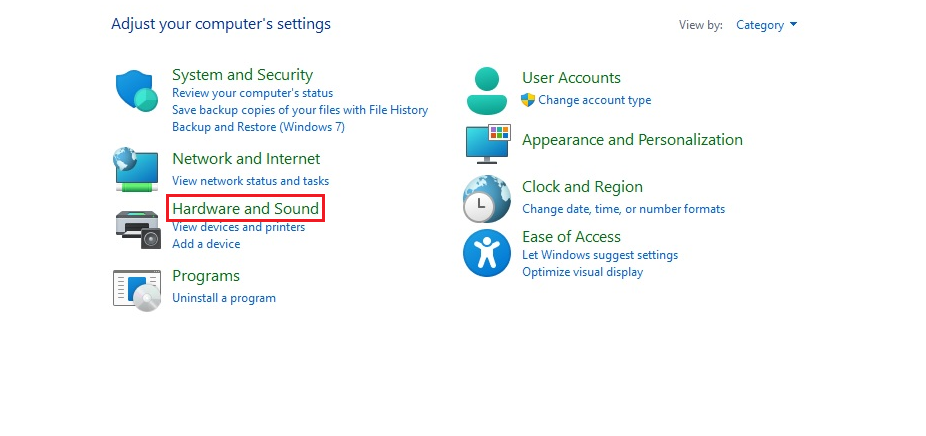
- Then, choose Sound.
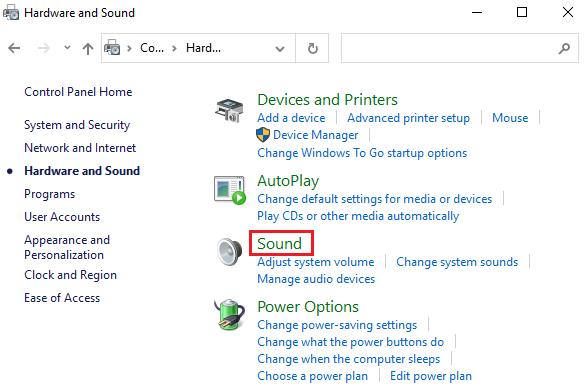
- A Sound window will appear. Click on the Playback tab from the top.
- Now, right-click on the audio source you wish to use and select Set as Default Device.
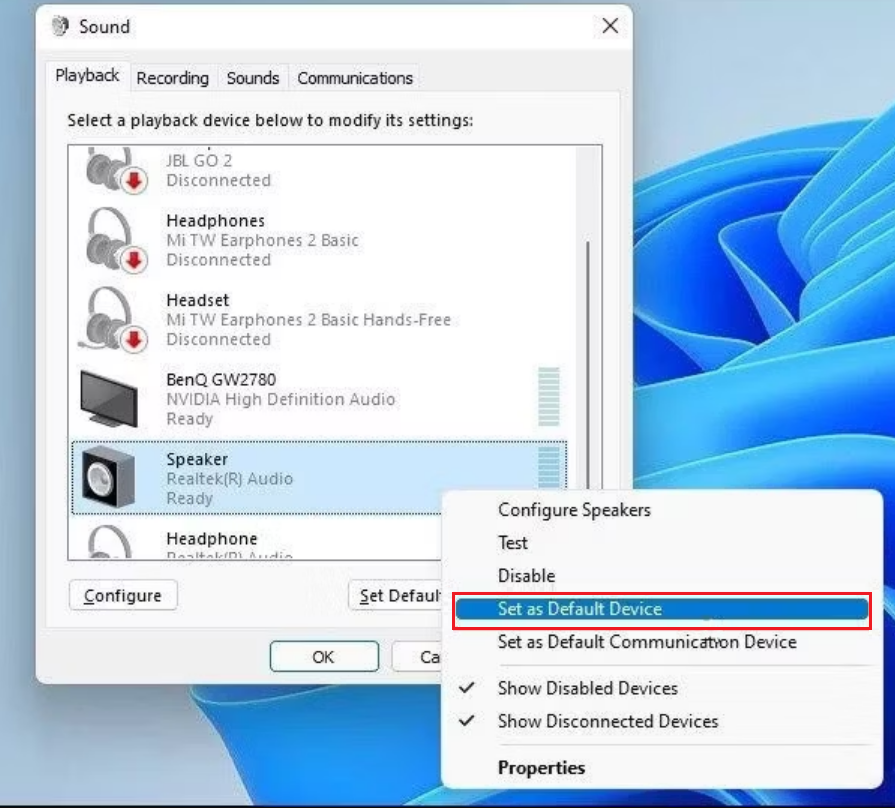
Play something on your computer and check if the low volume on Windows 11 problem is resolved or not.
4. Run the Audio Troubleshooter.
Windows has a built-in audio troubleshooter that runs a check on the system to diagnose any sound-related problem and tries to resolve it automatically. So before we perform some serious fixes, let the default tool do its job and see if that solves the issue.
Follow the steps below to do so:
- Go to Windows Settings by pressing Win + i keys.
- From the left pane, choose System.
- Select Troubleshoot present on the right side of the screen.
- Under the Options section, click on Other troubleshooters.
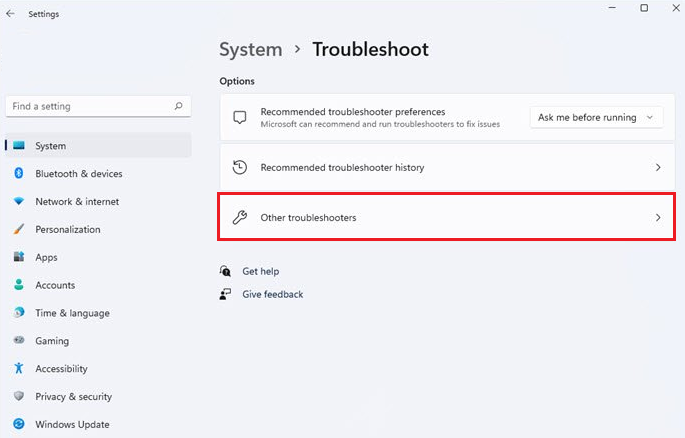
- Now, click on the Run button next to Playing Audio troubleshooter.
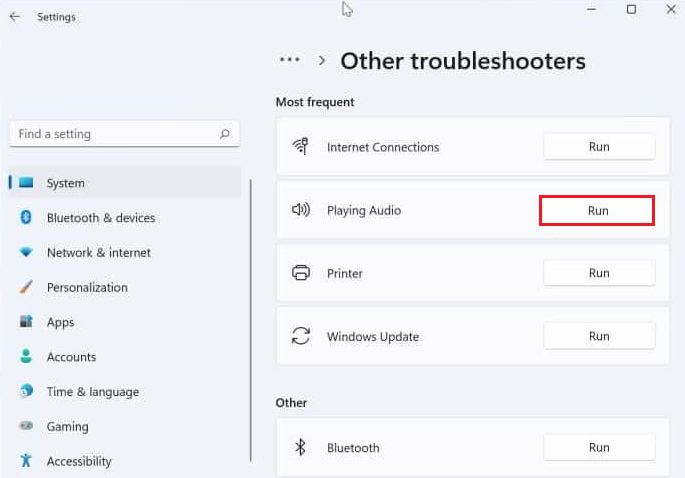
- The scan will take some time to finish. If the troubleshooter detects a problem, select Apply this fix.
- Lastly, restart your PC.
This should solve your issue. If the problem persists, head to the next method.
5. Turn On Loudness Equalization.
As the name gives away, the Loudness Equalization feature establishes a balance between an audio file’s low and high pitch. It has also been reported to enhance the audio quality and boost the volume at times.
To fix low volume on Windows 11, try enabling the feature if not already and see if that has any positive effect. Here’s how to do it:
- Launch the Start menu and type in ‘sound settings’ in the Search bar.
- Then, select Sound settings from the search results. Alternatively, you may press Win + i keys to head to the Settings app and select Sound from the System tab.
- Now, click on More sound settings.
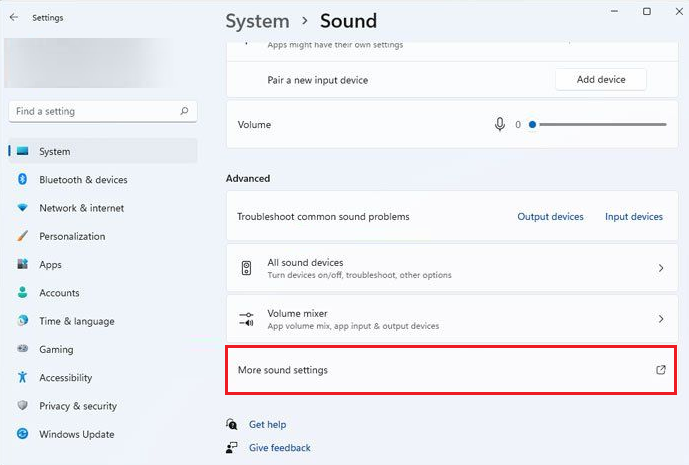
- Once the Sound window opens, choose the Playback tab and double-click on your audio device.
- From the Speaker properties dialog, click on the Enhancement tab.
- Check the box next to Loudness Equalization.
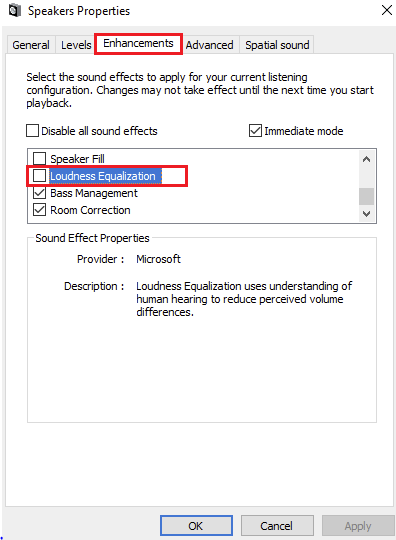
- Finally, click on Apply and then on OK.
6. Turn Off Sound Enhancements.
The Audio Enhancement package aims to improve sound quality and performance on Windows systems. Ironically, it may be the culprit behind the low volume on Windows 11 error. For many, disabling the feature has resolved the issue.
Here’s what you must do to disable it:
- Launch the Settings app by pressing Win + i keys on your keyboard.
- After that, click on System located in the left pane, then go to Sound.
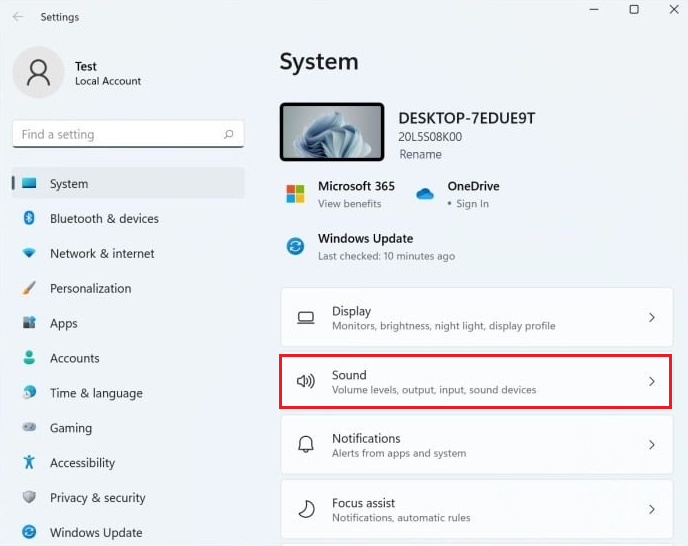
- Next, click on your audio device.
- Next to the Audio enhancements option, click on the drop-down menu and choose Off.
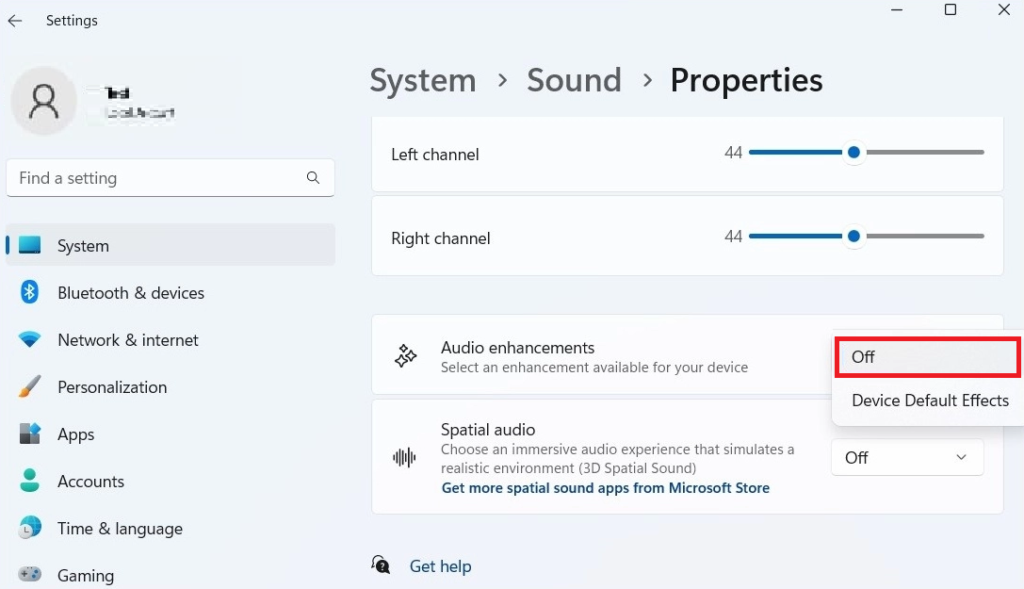
Once the Sound enhancements are disabled, play any audio and check if the issue is solved or not.
7. Restart Audio Services.
Windows offers multiple in-built services that operate in the background and ensure the high performance of processes running in your system. If you’re facing an issue of low volume on Windows 11, there might be a problem in the Audio services, or it may have failed completely.
In that case, you need to restart the failed audio services by following the steps below:
- Launch the Run dialog box by pressing Win + R keys.
- In the search bar, enter ‘services.msc’ and click on OK.
- Now, scroll and find the Windows Audio service. Right-click on it and choose Restart.
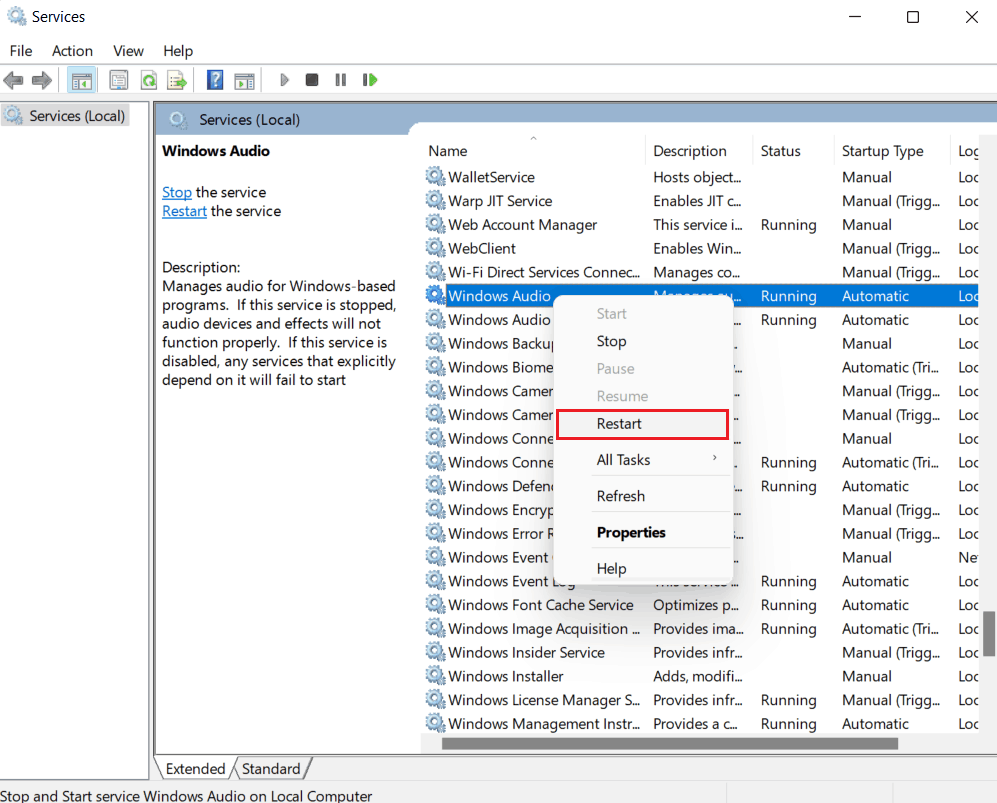
- Follow the same steps mentioned above to restart Windows Audio Endpoint Builder.
8. Change Sound Properties.
Another feature enabled at default on Windows 11 is that it automatically reduces the system sound whenever it detects any communications activity. This may be an instance when you experience low volume.
To change this setting, follow the steps below:
- Start by right-clicking on the sound icon in the taskbar and choosing Sound settings.
- Next, select More sound settings from the right side of the screen.
- Click on the Communications tab from the top and select Do nothing.
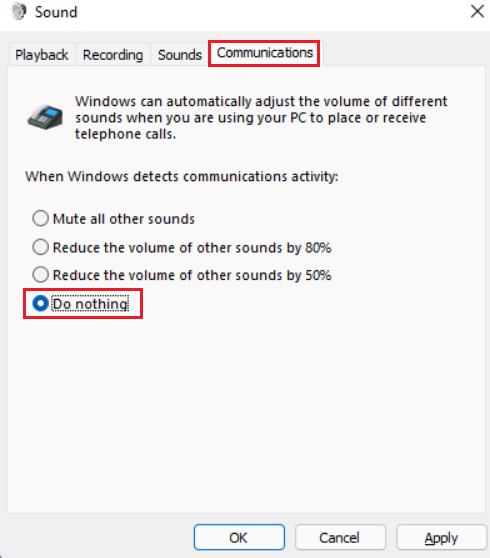
- Lastly, choose Apply to save these changes, then click on OK.
9. Update/Reinstall Audio Driver.
Audio drivers may get outdated, corrupted, or damaged over time. If you’re downloading them from an external source, they can also be incompatible with your system. In such situations, you are recommended to update or uninstall the current drivers.
Here’s how to do it:
- Begin by right-clicking on the Start menu and selecting Device Manager from the list.
- Locate and double-click on Sound, video and game controllers to expand the section.
- Next, right-click on your preferred audio device and choose Update driver.
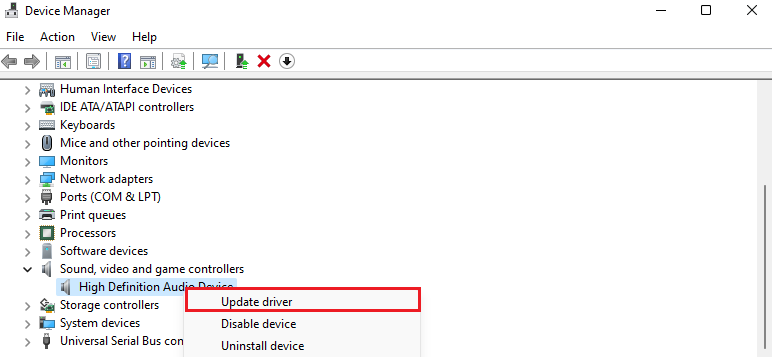
- Then, follow the on-screen instructions to update the sound driver.
- If the issue persists, consider reinstalling the driver by clicking on Uninstall device from the audio device options.
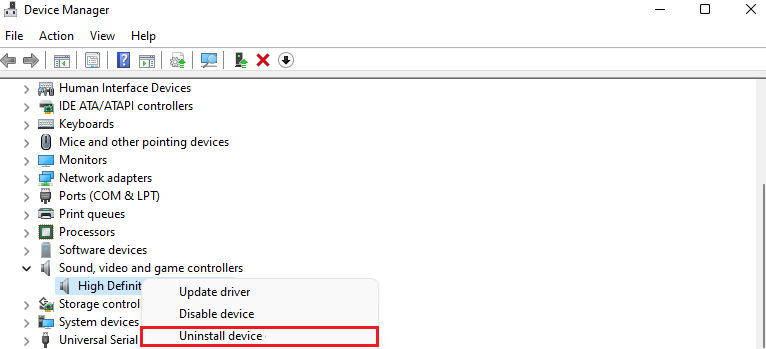
- Restart your computer, and Windows will automatically reinstall the missing driver.
10. Use A System Restore Point.
If you’re experiencing low volume on Windows 11 solely because of a bug or malware attack in the system and the error occurred just recently, you can use a system restore point to recover the state where it was working just fine.
By default, Windows System Restore automatically makes several restore points you can roll back to. However, if you don’t have it enabled, this method will not work. We recommend you give the program the necessary permissions to be safe in the future.
That was it! You’ve made it to the end of our guide on how to fix low volume on Windows 11. If you were successful in solving the issue, let us know your feedback in the comment section below. We’d love to hear about your experience and any suggestions you may have.
If this guide helped you, please share it. 😊





